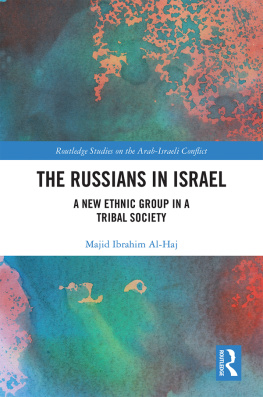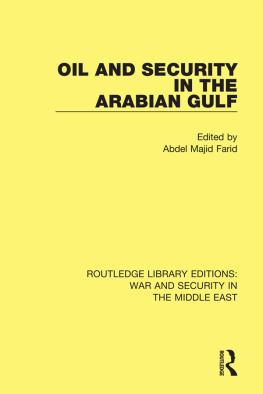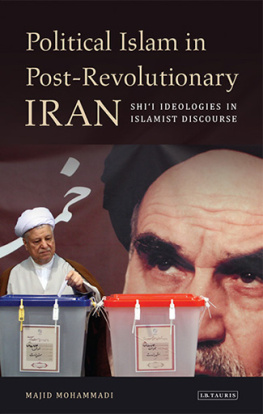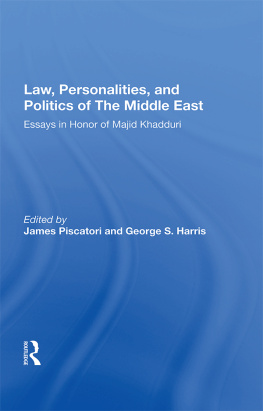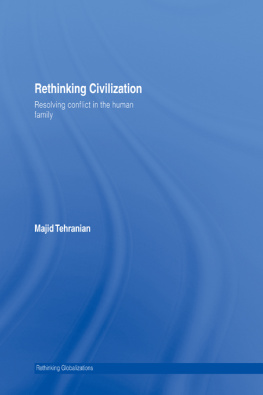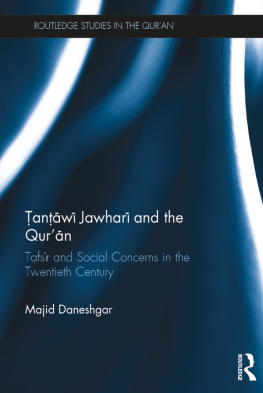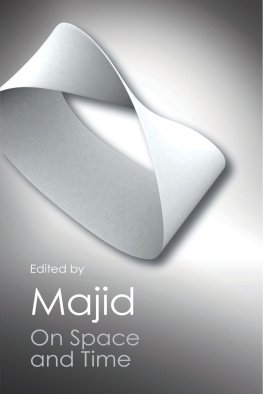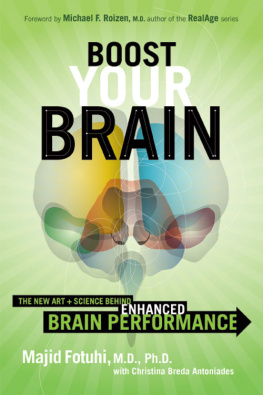Social Change and Family Processes
Brown University Studies in Population and Development
Urban Migrants in Developing Nations: Patterns and Problems of Adjustment, edited by Calvin Goldseheider
Rural Migration in Developing Nations: Comparative Studies of Korea, Sri Lanka, and Mali, edited by Calvin Goldscheider
Why People Intend to Move: Individual and Community-Level Factors of Out-Migration in the Philippines, Sun-Hee Lee
Rural Development and Family Migration: A Study of Choices in the Philippines, Sally Evans Findley
Social Change and Family Processes: Arab Communities in Shefar-A'm, Majid Al-Haj
About the Book and Author
In this book, Majid Al-Haj analyzes the structure of family kinship groups, the role of women, and fertility among several Arab subcommunities in Israel. He combines historical materials, anthropological evidence, and several major surveys in tracing family and demographic patterns in a developing Arab community. This study is the first to compare Moslems, Christians, and Druze over time in the same community and to integrate issues of modernization and population for minorities. Particular attention is given to the analysis of "internal refugees" among Moslems, the separation of structural from cultural determinants of family patterns, and the distinction between behavior and norms associated with family lifestyles. This volume represents a fascinating case study of an Arab town in the transition to modernity under the conditions of changing layers of minority status in Israeli society. Moreover, the author addresses broader issues of modernization and demographic change characterizing the Middle East and other developing areas of the world where minority ethnic conflict and population processes are intertwined.
Majid Al-Haj teaches sociology and anthropology at Haifa University in Israel and was a postdoctoral fellow at the Population Studies and Training Center, Brown University.
Brown University Studies in Population and Development
Published in cooperation with the Population Studies and Training Center Brown University
Editor
Calvin Goldscheider
Editorial Board
Sidney Goldstein
Philip Leis
Morris D. Morris
Alden Speare, Jr.
Social Change and Family Processes
Arab Communities in Shefar-Am
Majid Al-Haj
First published 1987 by Westview Press, Inc.
Published 2019 by Routledge
52 Vanderbilt Avenue, New York, NY 10017
2 Park Square, Milton Park, Abingdon, Oxon OX14 4RN
Routledge is an imprint of the Taylor & Francis Group, an informa business
Copyright 1987 Taylor & Francis
All rights reserved. No part of this book may be reprinted or reproduced or utilised in any form or by any electronic, mechanical, or other means, now known or hereafter invented, including photocopying and recording, or in any information storage or retrieval system, without permission in writing from the publishers.
Notice:
Product or corporate names may be trademarks or registered trademarks, and are used only for identification and explanation without intent to infringe.
Library of Congress Cataloging-in-Publication Data
Al-Haj, Majid.
Social change and family processes.
(Brown University studies in population and
development; no. 4)
Bibliography: p.
1. Palestinian ArabsIsraelSocial conditions.
2. Palestinian ArabsIsraelFamily relationships.
3. FamilyIsrael. 4. Family life surveysIsrael.
5. IsraelSocial conditions. I. Title. II. Series.
DS113.7.A63 1987 306.8'0899275694 86-28262
ISBN 13: 978-0-367-28747-4 (hbk)
Contents
, Calvin Goldscheider
This volume in the continuing series of Brown University Studies in Population and Development is unique in its emphasis on family process and its focus on the Arab community in Israel. Although the family connections to demographic and sociological aspects of development have been noted in the literature, this research by Majid Al-Haj has significantly increased our understanding of the processes underlying these connections. He has done this by carrying out the analysis of the Arab community in Israel in new and creative ways. Several innovative features of his research include:
* A major focus of the analysis is on the community context, integrating micro-individual and macro-national levels. It is in the local community that the nuances of ethnic variation and change are most conspicuous and where group differences tend to manifest themselves most clearly.
* The methodological approach is interdisciplinary, dealing with the family from anthropological and sociological perspectives and incorporating demographic orientations to families and households. The approach moves beyond an oversimplified notion of family structure to identify the multiple layers at the kinship, extended, and nuclear family levels, and deals effectively with the complexities associated with variation and change in the status of women and fertility patterns.
* Particular attention is addressed to the dynamics of social change within the Arab community, in the context of the broader society. These changes among Arabs and between Arabs and Jews in Israel are critical for understanding the family patterns analyzed in this research. The multiple comparisons necessitated by this approach have been often neglected in social science studies based on surveys or field work in developing nations. Statistical and other historical records cover a period of three-quarters of a century from the early decades of the 20th century to the contemporary period.
* All too often the Arab community has been treated as a homogeneous community and at best only crude differences among religious groups are identified. Dr. Al-Haj has analyzed important distinctions among Moslem, Christian and Druze subcommunities within an urban town of the State of Israel and has examined important distinctions within them as well. The analysis of the "internal refugees" among Israeli Moslems is a particularly important feature of the analysis.
* The careful examination of social change in the family patterns of Arabs within the community has led to the separation of structural from the cultural determinants and has distinguished between behavior and norms associated with family lifestyles.
These contributions unfold in their theoretical complexities and are disentangled by methodological innovations that clarify family structural patterns, kin relations, the role and status of women, and the issues associated with fertility, contraception, and reproduction. No previous study of Arabs, in general, or Israeli Arabs, in particular, presents such a rich analysis of family variation and change in the context of sociological and demographic aspects of development.
This study is therefore more than a case study of an Arab town in Israel. Arabs in Israel share larger spheres of culture, religion, and nationality with millions of Arabs living in neighboring countries of the Middle East. Moreover, they share social and demographic features of high but declining fertility levels, an emphasis on traditional family values and women status, shifts from agriculture toward urban lifestyles and occupations, new forms of economic and political dependencies, and the continuing importance of ethnic and religious differentation in modernizing societies. While illuminating the particulars of the community under investigation and the society of which it is a part, major issues of social and demographic change in the process of development are clarified.




